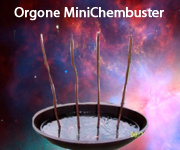Ohioans complain about Chemtrails and call the Government to task....
http://home.earthlink.net/~rcollins637/reports/dayton_chemtrails.htm
And end up with Meningitis....?
http://my.webmd.com/content/article/1728.80941
(...coincidence, you say? I think not...)
Thousands Take Antibiotics Following Ohio Meningitis Outbreak
(hmmm...and what do you suppose they are putting in those vaccinations...? Of course...what might they have added to the Chemtrails to make the vaccinations necessary...?)
Two Teens Die From Bacterial Infection; Another Still Hospitalized By Jeff Levine
WebMD Medical News
June 4, 2001 (Washington) -- Two Ohio teenagers have died after being infected with meningitis, an infection that attacks the fluid surrounding the spinal cord and the brain. A third patient, Christin Van Camp, is recovering from the disease at Akron's Children's Hospital, where she may soon be off life support.
"It can be all the way from mild disease to explosive and fulminate, fatal within hours," says Blaise Congeni, MD, director of infectious disease at the Akron facility.
Meanwhile, some 10,000 people in the surrounding area are getting drugs or vaccinations to prevent the spread of this bacterial strain called Neisseria meningitides, which causes the illness.
"Those with close contacts are being treated with antibiotics, and a decision is being made on whether or not to immunize the children in the area," Congeni tells WebMD. It's believed the two youngsters who died may have contracted the illness by sharing the same water bottle at a high school picnic last month. Tests showed they both had the same type of meningitis.
Congeni says antibiotics are effective, but people could still get the infection after ending the treatment.
It's estimated about 5% of all people have meningitis bugs in their bodies, and it's a big mystery why most of them never become ill.
Most cases of bacterial meningitis are isolated, but CDC spokesman Tom Skinner says outbreaks involving several cases, like the one in Ohio, occur three or four times a year. In case there is an outbreak in your child's school, keep an eye on your youngster to make sure he or she doesn't develop the telltale symptoms. If so, seek medical advice.
The symptoms include high fever, headache, and stiff neck. In later stages, the infection can lead to seizures. Meningitis can either be a viral or bacterial infection. Bacterial meningitis is transmitted by an exchange of secretions -- by coughing or kissing, for instance. However, long-term exposure to someone with meningitis in a household or a day care center could also put you at risk.
According to the CDC, the Neisseria meningitidis type infects about 3,000 Americans annually. The death rate is about 15%, Skinner tells WebMD. Among the survivors, 10% have severe after-effects like mental retardation.
Currently, a CDC official is in the Alliance, Ohio, area -- where the outbreak began -- to offer guidance to local public health officials. Congeni says there is no reason for the people in nearby communities to be alarmed.
For some reason, children in their second decade of life are particularly susceptible to meningitis. Fortunately, there is an effective vaccine against this type of the disease. It's considered quite safe, but because the cost runs up to $50 dollars and the infection is relatively rare, the CDC says the shot isn't required.
However, the agency does suggest the vaccine for freshmen students heading off to live in dormitories. The CDC says they are "a group found to be at a modestly increased risk of risk" for getting the disease. "Most physicians, I would say, are not even discussing it with parents. ... I think it's wrong," says Congeni.
"The recommendations have been made that we cannot vaccinate everybody, but I think if we better understand the risk groups, then I think we'll be ahead," Chris Taylor, PhD, of the respiratory diseases branch of the National Institute of Allergy and Infectious Disease.
Researchers are also developing a better vaccine, since the current one is about 30 years old.
The vaccine only works for about five years before requiring a booster shot, and although it stimulates the immune system to produce antibodies, it's not as precise as some of the newer approaches that sensitize other key defense mechanisms in the body, which might keep the bacteria from getting a foothold in the bloodstream.





































